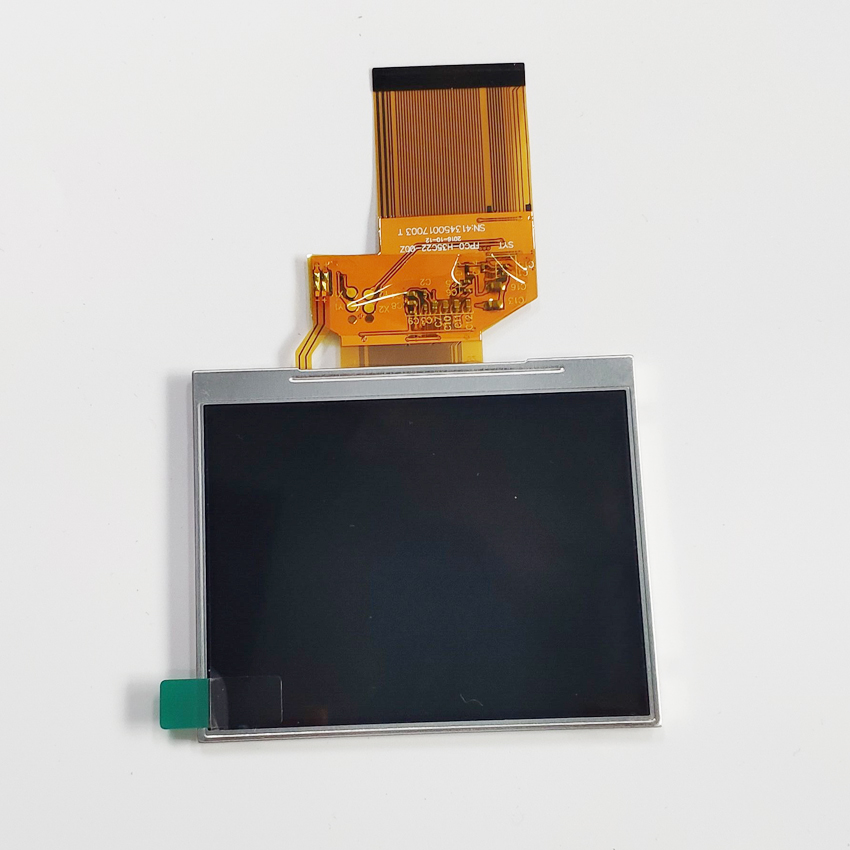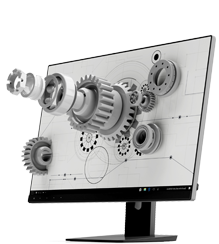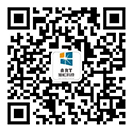The principle and design of semi reflective and semi transparent LCD display

Translucent LCD is a technology that combines both reflective and transmissive display modes, capable of automatically optimizing display effects under different lighting conditions
Translucent LCD is a technology that combines both reflective and transmissive display modes, capable of automatically optimizing display effects under different lighting conditions. It is widely used in scenarios that require both indoor and outdoor visibility, such as medical equipment, outdoor instruments, portable devices, etc. The following are the key points of its principle and design:
I.Core principle
1. Integration of display modes
-Reflective mode:
By using ambient light to reflect through the Translucent Film on the screen surface to the liquid crystal layer, content can be displayed without backlight. It is suitable for strong light environments (such as outdoor or operating room strong light) and has extremely low power consumption.
-Transmissive mode:
Activate the backlight module (such as LED) in a dark environment, allowing light to penetrate the liquid crystal layer and display images, ensuring visibility in low light conditions.
2. Key structural design
-Half transparent and half reflective membrane:
Located below the liquid crystal layer, it partially reflects ambient light (reflectivity of about 20-30%) and partially allows backlight to pass through (transmittance of about 70-80%), achieving dynamic balance between the two modes.
-Liquid crystal layer and polarizer:
Liquid crystal molecules control the rotation angle of polarized light through voltage, adjust the transmittance, and form images.
-Backlight module *:
Adopting a low-power LED array, supporting brightness adjustment, and adapting to different environmental requirements.
II. Design points
1. Balance between reflection and transmission
-Reflection layer optimization:
By using microstructured reflective films (such as prism arrays) to improve the utilization of ambient light and enhance contrast under strong light.
-Enhancement of transmission efficiency:
Using high transmittance liquid crystal materials and ITO electrodes (indium tin oxide) to reduce backlight losses.
2. Backlight dynamic control
Integrated ambient light sensor, automatically switches between reflection/transmission modes or adjusts backlight brightness based on light intensity, for example:
Turn off the backlight under strong light, completely relying on reflection mode (power consumption<1mW);
Turn on the backlight to 50-200cd/m ² in low light to ensure clear display.
3. Materials and processes
Wide temperature liquid crystal material:
Select a wide temperature range of -30 ° C to 80 ° C LCD to ensure response speed and stability in extreme environments (such as emergency equipment).
AR Coating:
-Reduce screen surface reflection interference and improve visibility under strong light.
Touch screen integration:
- Supports resistive or capacitive touch, using reinforced glass cover plates that are anti fouling and scratch resistant (such as Corning Gorilla Glass).
4. Power consumption optimization
Partition backlight technology:
-Only light up the display content area to reduce overall power consumption (suitable for portable medical devices powered by batteries).
Low driving voltage design:
- By optimizing the circuit, the driving voltage is reduced to below 3V to minimize energy consumption.
III.Typical applications in medical equipment
1. Portable monitor
-During outdoor emergency treatment, it relies on reflex mode and switches to transmission mode in the operating room, balancing battery life and visibility.
2. Handheld blood analyzer
-A semi reflective and semi transparent screen can read data without backlight in strong light, reducing the need for frequent charging.
3. Field mobile medical terminal
-Wide temperature design and adaptive characteristics for ambient light, suitable for extremely cold or high temperature environments.
IV.Technical Challenges and Solutions
1.The contradiction between reflectivity and transmittance
-Solution: Adopting nanoscale optical coatings and improving reflection efficiency through multi-layer film interference technology while keeping the transmission channel open.
2. Perspective and color uniformity
-Solution: Use IPS (planar switching) liquid crystal technology to expand the viewing angle to 178 ° and optimize the backlight uniformity algorithm.
3. Electromagnetic interference (EMI)
-Solution: Metal shielding layer+flexible circuit board design, certified for medical electromagnetic compatibility according to IEC 60601-1-2.
V. Future development direction
-Dynamic reflectivity adjustment: By controlling the liquid crystal layer to change the reflectivity, more flexible environmental adaptation can be achieved.
-Micro LED backlight: enhances the brightness and energy efficiency of the transmission mode.
-Flexible semi reflective and semi transparent screen: used for wearable medical devices (such as smart bandages).
The semi reflective and semi transparent LCD screen solves the limitations of traditional LCD in variable lighting scenarios through clever optical design and dynamic mode switching. Its low power consumption and high environmental adaptability make it an ideal choice for medical, industrial and other professional fields.
TFT LCD:https://www.idtdisplay.com/products










